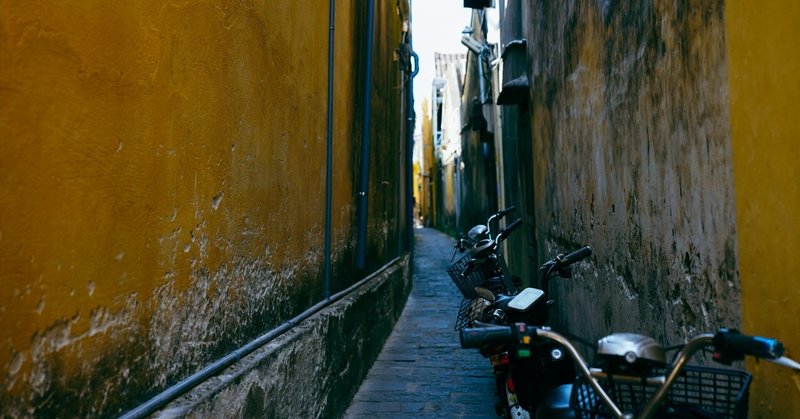
カオスの中の秩序 Order in chaos
今週も引き続きダナンにいます。
I'm still in Da Nang this week.
随分と前に、伊藤穰一さんが出演したクローズアップ現代を観た中で、特にこのシーンが印象に残っています。
A while ago, I watched an episode of 'Close-up Gendai' featuring Joi Ito, and a particular scene has stayed with me.
父の恩師であるノーベル賞学者の福井謙一さん。福井さんは、池に浮かぶ木の葉を指さして、伊藤さんに言いました。「水面に浮かんで揺れる葉っぱ。この動きを数式にするのは非常に難しい。この世界は例えば、大気の流れにしても株式市場にしても一見、複雑な現象ばかりでまさにカオス。しかし、そこにはある一定の美しい規則性がある。」MITメディアラボ所長 伊藤穰一さん「彼は目をつぶって、で開いて『カオスのこと勉強したほうがいい』と言って、それでもうガラッと僕の考え方が変わるんで、何年大学行っても思いつかないようなこと。」
It involved Kenichi Fukui, a Nobel laureate and a mentor to Ito's father. Pointing to a leaf floating in a pond, Fukui told Ito, "It's extremely difficult to formulate the movement of a leaf fluttering on the water surface into an equation. This world, whether it's the flow of the atmosphere or the stock market, seems filled with complex phenomena, essentially chaos. However, there's a certain beautiful regularity within it." Joi Ito, then director of the MIT Media Lab, recalled, "He closed his eyes, then opened them and said, 'You should study chaos,' which completely changed my way of thinking, something I wouldn't have come up with after years at university."
ベトナムに滞在していて、日本と比べるとカオスの中にいるなと感じる日々を送っています。特にほとんど信号もカーブミラーもないような中で、バイクと車と歩行者が一体となっている様子は混沌そのものです。しかしながら、1週間もすると、そこに秩序があるように思えてきました。
Staying in Vietnam, I feel immersed in chaos compared to Japan. The way motorcycles, cars, and pedestrians merge without many traffic signals or mirrors seems utterly chaotic. Yet, after a week, I began to sense an order in the chaos.


例えば、日本ではあちこちに信号があり、バイクも車も歩行者も、ルールを守って暮らしています。時には、全く交通量がないようなところでも、無意味に信号を守って停まっている歩行者さえ見かけます。ルールとしてはそうなのでしょう。けれども、あまりルールに縛られると、人間、自ら考えることを放棄してしまうように思います。
In Japan, there are traffic signals everywhere, and bikes, cars, and pedestrians abide by the rules. Sometimes, people stop at signals when there's no traffic at all, adhering to the rules to the point of absurdity. Being overly bound by rules can lead to abandoning critical thinking.


話を戻すと、ベトナムにおけるクラクションの役割は日本のそれと異なるように思えてきました。日本ではある種文句のような使い方が一般的のように思います。割り込んできて、何しているんだ!というように。しかし、ベトナムではそれは、コミュニケーションや自己主張のツールのように見えてきました。よく観察すると、バイクの運転手は、誰もいない路地の手前でクラクションを鳴らしたりしているのです。
Returning to my observations, I've started to perceive the role of car horns in Vietnam differently from Japan. In Japan, horns often express annoyance, but in Vietnam, they seem more like tools for communication and self-expression. Observing closely, motorcyclists use their horns not just as complaints or warnings but as gentle assertions of presence, a form of 'I'm here, please be mindful.'


つまり、誰かに対しての文句や警告ではなく、緩やかな「ここにいますよ、気をつけてくださいね」という自己主張という側面があるのではないでしょうか。それはルールに縛られることとは正反対の世界であり、まさに混沌の中の秩序のように思います。また、手段は何にせよ、個人同士が緩い形でコミュニケーションをはかる。そんなこともこの時代に大切なように思えてなりません。まあ、考えすぎかもしれませんが。
This suggests a world not constrained by strict rules, a form of order within chaos, where individuals communicate loosely with each other. This seems increasingly important in our times. Maybe it's overthinking, but it's a thought worth exploring.


意識をそこに向けると、クラクションの音を皮切りに、街全体で呼吸というか、コミュニケーションをしているようにすら思えてきました。ということで、僕も引き続き、カオスについての勉強を深めていきたいと思います。
When I directed my attention to it, starting with the sound of car horns, it almost felt as if the entire city was breathing, or communicating, in unison. So, I'll continue delving into the study of chaos.

この記事が気に入ったらサポートをしてみませんか?
